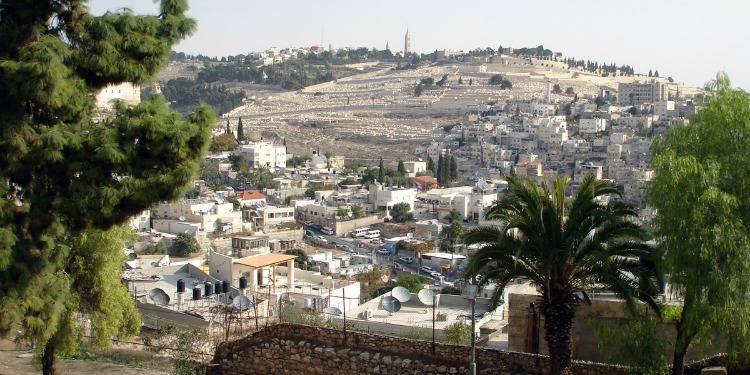The Truth About Jerusalem’s City of David
Stand for Israel | July 11, 2019

Anywhere you step in the Holy Land, you are following in the footsteps of the men and women in the Bible. One of these places is the City of David in Jerusalem. Nadav Shragai writes at JNS that while Palestinians try to use this site to deny Jewish ties to the Holy City, it continues to be a fount of biblical history and truths:
A photo of the U.S. Ambassador to Israel David Friedman and U.S. envoy Jason Greenblatt on July 1 striking a thin, symbolic wall with a sledgehammer—a wall built to separate two parts of the ancient Pilgrimage Road—became the headline of the archaeological site’s inauguration ceremony.
The road is one of the most sensational archaeological discoveries to be made in Jerusalem since Israel’s establishment. On this road, which was remarkably preserved under the ashes of the Roman destruction, many thousands of Jews, according to the historical descriptions, walked to the Temple Mount in Second Temple times, after a ritual bath in the nearby Siloam Pool.
Over the past five years, Israeli archaeologists have uncovered 350 meters of this road in the City of David, including numerous artifacts that bring to life the last battle in Jerusalem, about 2,000 years ago, between the Jewish rebels and the Romans…
And now the Pilgrimage Road has been discovered. Only about 350 of the 700-meter road have been uncovered so far. Although the prevailing opinion was that Herod built the road, it turns out it was built in the time of the Roman governors who came after him, specifically in the days of the Roman governor Pontius Pilate.
The archaeologists who have been excavating the Pilgrimage Road over the past five years—Dr. Joe Uziel, Ari Levi, Nachshon Zenton and Moran Hajibi—have also shattered another assumption: It was not the poor who lived along the Pilgrimage Road in the area of the “Lower City,” but in fact a wealthy population. Among the ravages of destruction that have been uncovered along the road, luxury items have been found, including inlaid stone tables, jewelry of various kinds, and perfume bottles.
Along with these are many other findings: coins, cooking pots, complete stone and clay tools, rare glass items, a magnificent dais (for public announcements) and parts of arrows and catapults—testimony to the last battle in the “Eastern Hill” during the Great Revolt of the Jews against the Romans, which concluded with the destruction of the Second Temple…
